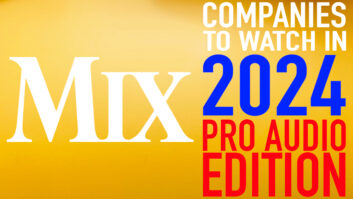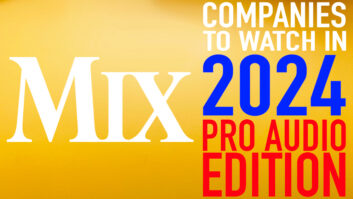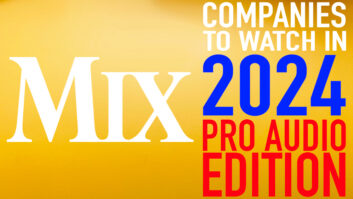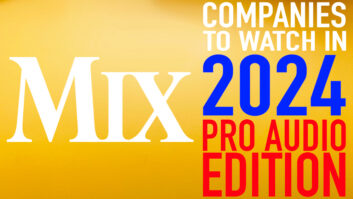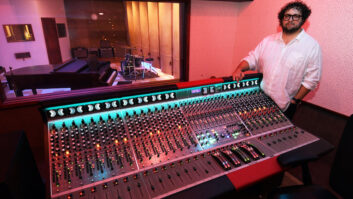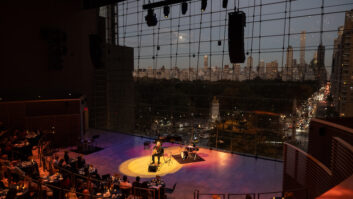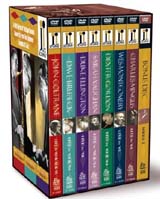
We kicked off this DVD Watch column a year ago by looking at an amazing group of releases from Reelin’ in the Years Productions of live performances from the ’50s and ’60s by some of jazz’s all-time greats, plucked from the vaults of various European television stations. At that time, the company promised that there would be more DVDs by other artists on the way, and this fall they made good on that pledge. Series 2 of Jazz Icons is every bit as good (and important) as Series 1 was, and together, the 17 discs constitute a spectacularly rich portrait of jazz at one of its true high-water marks, and of many of the greatest practitioners of this uniquely American art form.
As with the first batch of nine releases from last year, Jazz Icons Series 2 is available both as a boxed set or as individual releases. I must say, too, that even though I came to these discs with certain favorite artists I was excited about hearing (taste and preferences always being subjective), I can truthfully say that every one of these is superb and worth owning. The audio and video on each hour-plus disc is crisp and clear as can be, plus every one is accompanied by a very illuminating booklet filled with photos, memorabilia and essays about each artist, often by other musicians or people who knew or worked with the artists—e.g., Pat Metheny has an illuminating essay about guitar great Wes Montgomery; Dave Brubeck’s genius is explained by his son Darius, etc.
Here’s a rundown of what you’ll find in Series 2.
Duke Ellington, Live in ’58: A splendid full-length concert from Amsterdam’s legendary Concertgebouw with one of Ellington’s greatest big bands, which at the time included Johnny Hodges, Clark Terry, Ray Nance and many others. Each of the players gets plenty of solo space and the ensemble work is brilliant, of course. Pianist/bandleader/composer Ellington is a genial emcee as he leads his group through a selection of tunes and medleys spanning his entire career up that point. The band’s affection for the music and for each other is evident and infectious.
Dave Brubeck, Live in ’64 and ’66: This was quite a revelation to me. I’ve been a fan of Brubeck’s since high school (when, like so many others, I fell in love with “Take Five”) but I’d never seen any footage of his classic quartet with Paul Desmond, Joe Morello and Eugene Wright in action. These TV appearances, two years apart, but still during their commercial peak, show’s the group’s incredible chemistry on a broad range of material—they completely remake standards such as “St. Louis Blues” and “Take the ‘A’ Train” in their own image, and offer up two quite different takes of both “Take Five” and the beautiful “Koto Song,” among others. Brubeck and Desmond are at peak form and in full command throughout. Tremendous!
John Coltrane, Live in ’60, ’61 & ’65: Coltrane fans rejoice! This disc features 90 minutes of vintage Coltrane from two different eras and, more than any of the other DVDs in either series, shows a marked evolution in style from beginning to end. The first few numbers, from 1960, find Coltrane on tenor sax fronting the solid group of Wynton Kelly, Paul Chambers and Jimmy Cobb, joined on two songs by tenor sax player Stan Getz and the always magnificent pianist Oscar Peterson on another. Trane’s playing is stately and powerful, expressive on the ballads, but still somewhat traditional, one might say. By ’61, he’s hooked up with pianist McCoy Tyner and the incomparable drummer Elvin Jones in a quintet that also included bassist Reggie Workman and the prodigiously talented and adventurous Eric Dolphy on alto and flute. There’s a great reading of “My Favorite Things” (with Trane on soprano, my favorite) from this lineup and also “Impressions,” which points more in the new directions Trane’s music would go in the next few years. He made some of his most adventurous music between ’61 and ’65, so when the disc picks up the “classic” quartet (with Tyner, Jones and Jimmy Garrison), there’s been quite a change in his sound. “Vigil” is bold and cacophonous, full of squonks and squeals—dissonant but passionate. But the wonderful “Naima” shows that Coltrane is no less-sensitive to melody and nuance during this period. Then, the second “My Favorite Things” is back to the wilder, freer style of “Vigil,” with lots of long, exploratory soloing and some of the finest work by McCoy Tyner you’ll find anywhere…Wow!
Sarah Vaughan, Live in ’58 and ’64: It’s probably not accurate to say that Sarah Vaughan was “underrated” exactly, but she’s not as famous as she should be. This singer really had a way of making a song hers. For proof you need go no further than her stunning version of “Over the Rainbow” from Holland 1958, where she takes that tune to places Judy Garland probably never even imagined! I was surprised that on the 1958 performances, Vaughan looks a little nervous (we learn in the notes she had problems with stage fright), but she always sounds like she’s in complete control—there’s an effortless grace to her style, as if everything just flows naturally out of her. Fronting three different trios and singing standards and show tunes mostly, she never fails to bring out the beauty of the melody while also adding her own unique jazz pizzazz, which is always tasteful, never showy. During the 1964 concert in Sweden, she also looks happier and more comfortable; perhaps the intervening six years of critical plaudits helped her self-confidence.
Dexter Gordon, Live in ’63 and ’64: Here’s one where my own memories of seeing Dexter Gordon late in his career (at the Berkeley Jazz Festival) and in the excellent 1986 Bertrand Tavernier film ’Round Midnight, had colored my impressions of him. Seeing him in the autumn of his life made me forget what a vital and dynamic figure he had been. Widely credited with having influenced everyone from Coltrane to Sonny Rollins, Gordon was a true tenor sax titan, and these performances, shot during his long European (self) exile, show him in total command as he fronts two different piano-bass-drums lineups. I love the way the DVD opens: we see Gordon, in trench coat and pork-pie hat, wandering the back alleys of Amsterdam. He steps into a bar, where a trio is already swinging, gives his coat and hat to the bartender, picks up his sax, intones a little poetic imagery into the mic, and then leads the group into a wonderful take on the bebop classic “A Night in Tunisia.” I particularly like that club setting for Gordon’s music; when the action switches to a larger auditorium in Switzerland (’63), the music loses a little of its intimacy, but is still powerful. The final two songs (Belgium ’64) are in a TV studio but really show the group well—there are lots of great close-ups that let you see Gordon feel the music as it pours out of him.
Wes Montgomery: Live in ’65: I should probably come right out and admit I’ve never really given Wes Montgomery his due. Even though he was a major influence on many other guitarists I admire, I’ve often found his sound a little too clean and safe; his material a bit on the lounge-y side. Actually seeing him in action on this DVD hasn’t really changed my opinion much, though I do give the guy props for having some very serious chops. His fluid style—fingers that glide smoothly over the fret board of his hollow-body Gibson, deft picking with his right thumb—can be quite remarkable, and his sound is always warm and full. On these studio dates he and his small (pick-up) groups are relaxed and happy; there’s a nice camaraderie among the players that adds to the charm of the music. A few numbers really take off, like “Impressions” and “Four on Six,” but a lot of this is still a little too smooth for my taste. Obviously, if you’re already a Wes fan, your opinion will probably differ, and you’ll also enjoy casual rehearsal vibe of some of it—we get to hear him discussing with the musicians how he wants a certain things played and there’s a bit of banter here and there; a nice touch indeed.
Charles Mingus, Live in ’64: As soon as you see the Mingus name, you know you’re in for a wild ride. He was one of the most original and idiosyncratic figures the jazz world ever produced; he threw out the rule book and wrote his own. He is decidedly not everyone’s cup of tea, but I find him fascinating and his music unusual and invigorating. On this DVD the bassist/composer fronts a fantastic and versatile band comprising Eric Dolphy on alto, flute and bass clarinet (love it!), tenor sax player Clifford Jordan, trumpeter Johnny Coles (who is not on the numbers filmed in Belgium), pianist Jacki Byard and Mingus’ favorite drummer, Donnie Richmond. There’s so much going on in these tunes that it’s difficult to know where to begin; suffice it to say they move from passages of great lyrical beauty to ones of volcanic intensity. There are mad, abrupt rhythm shifts and places where form seems to break down completely as everyone flies freely. The musicianship throughout is stunning: Mingus arguably had no equal on his instrument at that time; the mercurial Dolphy (who died shortly after this tour) was like a force of nature; and Baird in some ways in the lynchpin who holds much of it together with his elegant and intelligent playing. The disc boasts no fewer than four versions of “So Long Eric,” each quite different from the others (and one sprawling to some 20 minutes!) Also impressive is “Meditations on Integration,” one of Mingus’ multi-layered pieces that seems to encompass old and new jazz, blues, classical and other styles in one composition. It’s amazing to think anyone could actually learn this music, much less play with so much verve and style. Quite a band!
Finally, the box-set version of Jazz Icons 2 includes a bonus DVD with more performances from Coltrane, Gordon, Brubeck and Vaughan. Somewhere in this box is the perfect holiday gift for your favorite jazz fan. And if you really love him/her, get the whole box!
Series producers: David Peck, Phillip Galloway and Tom Golotta. Associate producer: Don Sickler. Editor: Steve Scoville.
Wes Montgomery supporters and others can find me at [email protected].
